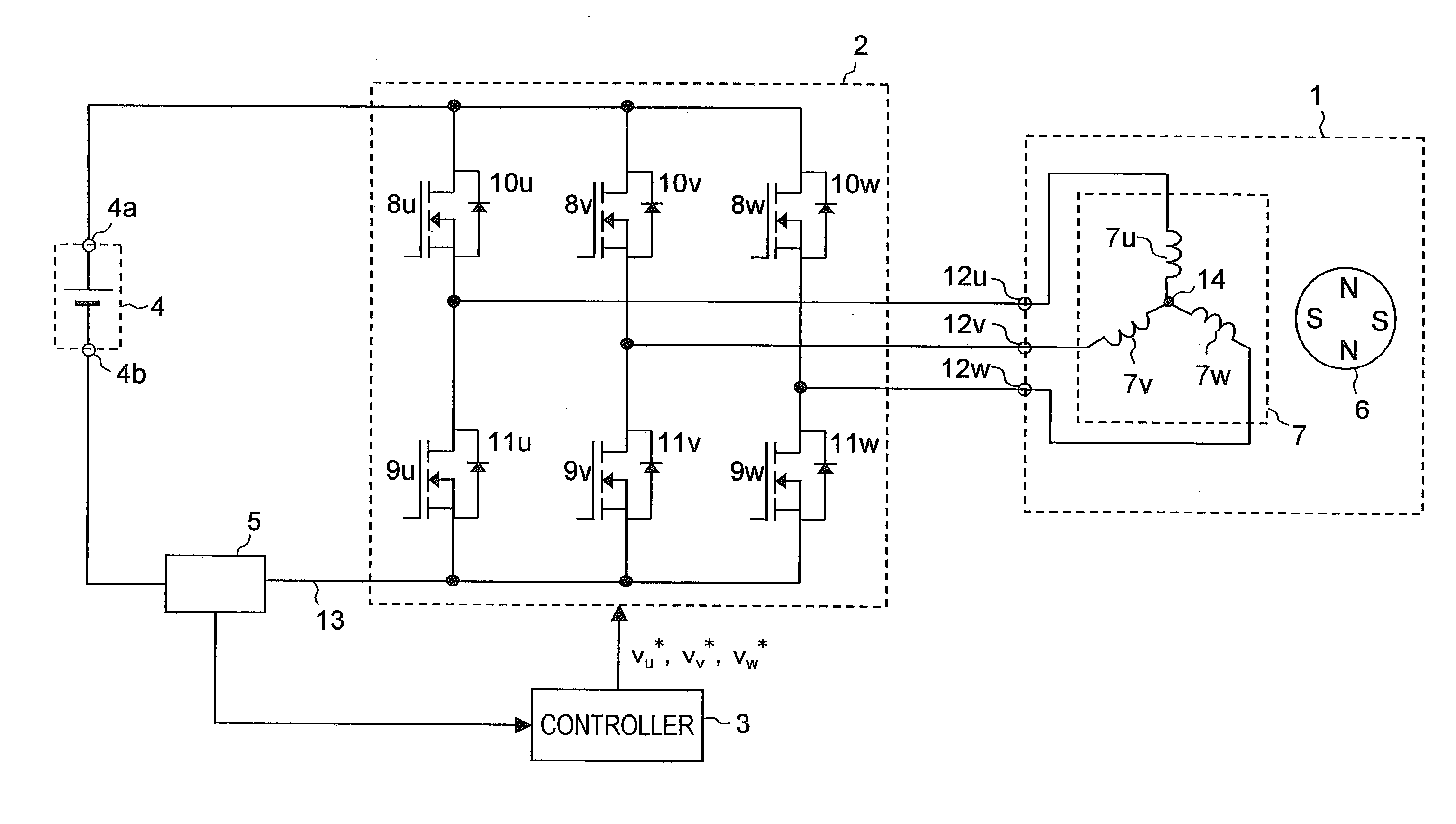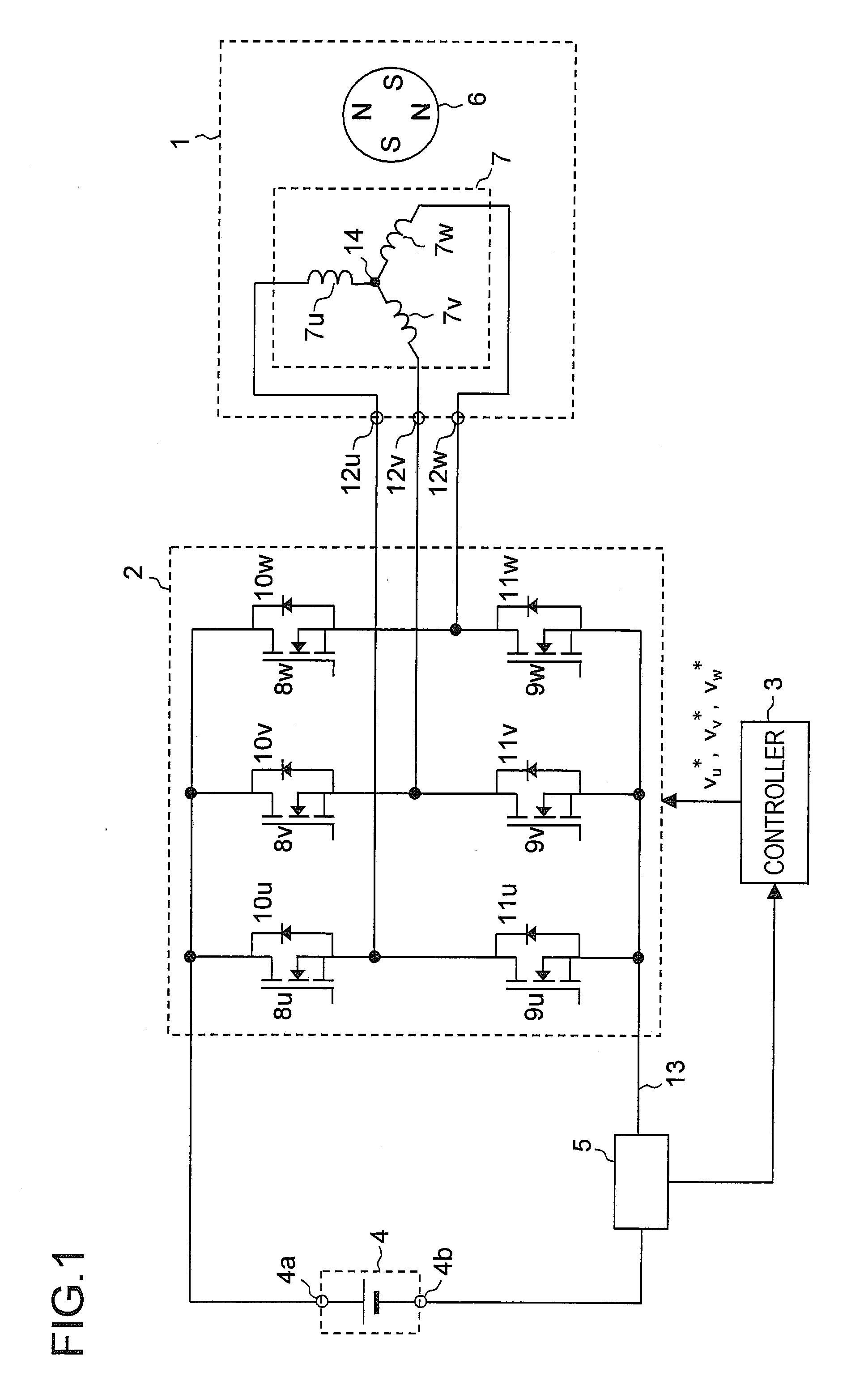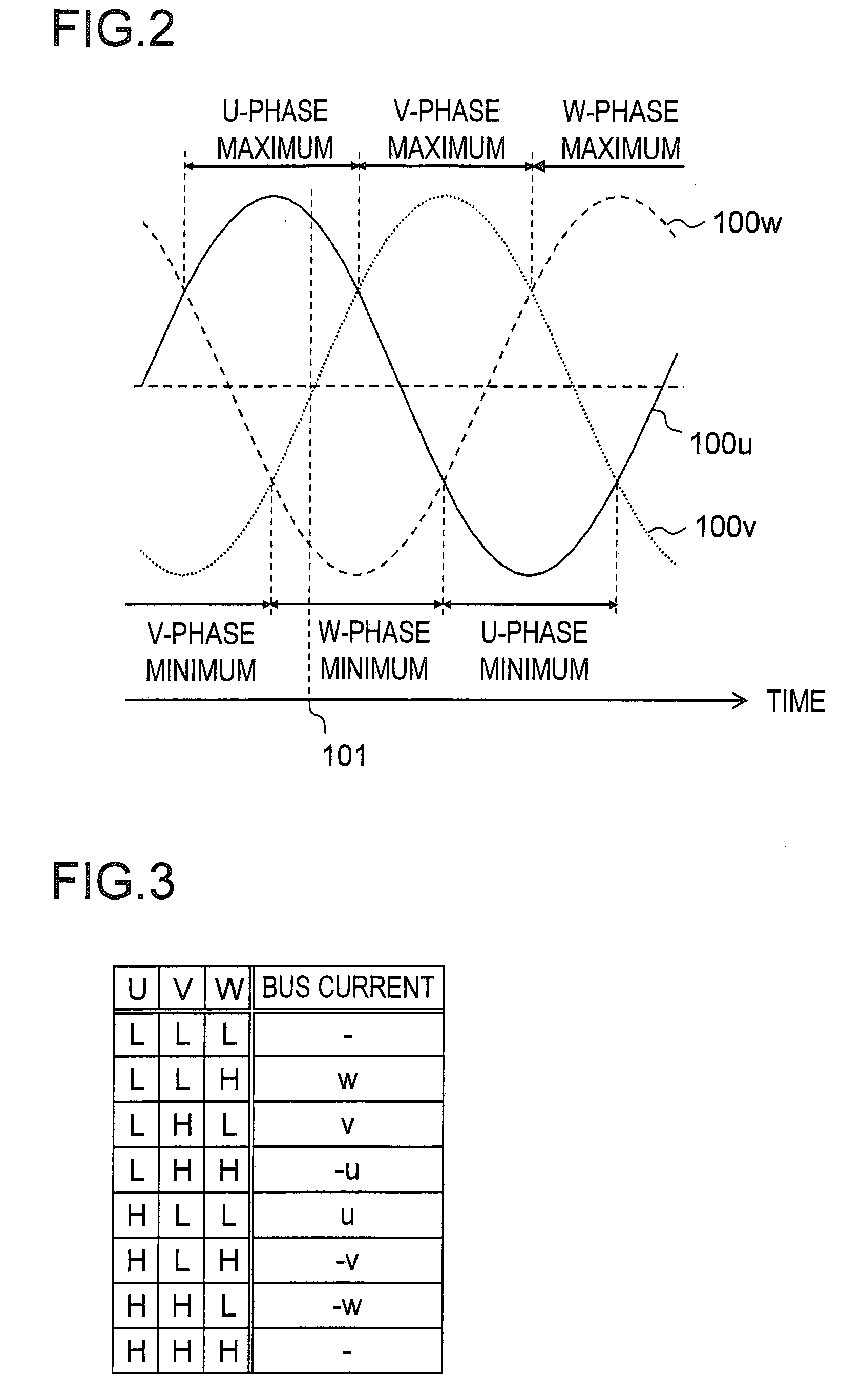Current Detector Unit And Motor Control Device
a current detector and motor control technology, applied in the direction of electronic commutators, dynamo-electric converter control, instruments, etc., can solve the problems of increasing the overall cost of a system incorporating the motor, unable and inability to detect two phase currents
- Summary
- Abstract
- Description
- Claims
- Application Information
AI Technical Summary
Benefits of technology
Problems solved by technology
Method used
Image
Examples
example 1
[0110]First, Example 1 will be described. FIG. 12 is a block diagram of a motor drive system according to Example 1. The motor drive system shown in FIG. 12 includes a controller 3a, in addition to the motor 1, the inverter 2, the direct-current power supply 4, and the current sensor 5, which have been shown in FIG. 1. The controller 3a is a specific example of the controller 3 shown in FIG. 1, and realizes the functions of the controller 3. The controller 3a includes different parts represented by reference numerals 21 to 26. The different parts constituting the motor drive system can freely use all the values produced within the motor drive system as necessary.
[0111]Before presenting a detailed description of the different parts of the motor drive system shown in FIG. 12, different state quantities (state parameters) will be described and defined. FIG. 13 is an analysis model diagram of the motor 1. FIG. 13 shows the U-phase, V-phase, and W-phase armature winding fixed axes. Refer...
example 2
[0156]Example 1 deals with the motor drive system in which vector control is performed such that the axis error Δθ between the d- and γ-axes is made to converge to zero, that is, such that the γ-axis is made to follow the d-axis; however, Example 1 may be modified to be Example 2 in which vector control is performed such that the γ-axis is made to follow an axis other than the d-axis. For example, by defining a dm-axis described in the treatise titled “Position Sensorless Vector Control for Permanent Magnet Synchronous Motors Based on Maximum Torque Control Frame” by Hida et al.; published by the Industry Applications Society of the Institute of Electrical Engineers of Japan; included in the Collection of the Lecture Treatises Presented at the 2006 Annual Conference of the Industry Applications Society of the Institute of Electrical Engineers of Japan; pp. 385-388 (I-385-I-388); August 2006, vector control may be performed such that the γ-axis is made to follow the dm-axis.
[0157]The...
example 3
[0159]Examples 1 and 2 deal with the motor drive systems in which position sensorless vector control is performed that uses no position sensor for detecting the rotor position. However, the techniques described in Examples 1 and 2 are useful in a case where the position sensor is provided. As Example 3 of the invention, a description will be given below of a motor drive system provided with the position sensor. In a case where the position sensor is provided, the motor drive system of Example 1 (or 2) may be modified as follows.
[0160]The estimator 26 is removed from the motor drive system shown in FIG. 12. The phase of the d-axis detected by the position sensor is treated as θe, and is fed to the coordinate converters 22 and 25. Here, θe is, ideally, equal to 0 shown in FIG. 13. In addition, Oe based on the detection of the position sensor is differentiated by a differentiator (unillustrated) for speed calculation to obtain ωe, and θe thus obtained is fed to the speed controller 23....
PUM
 Login to View More
Login to View More Abstract
Description
Claims
Application Information
 Login to View More
Login to View More - R&D
- Intellectual Property
- Life Sciences
- Materials
- Tech Scout
- Unparalleled Data Quality
- Higher Quality Content
- 60% Fewer Hallucinations
Browse by: Latest US Patents, China's latest patents, Technical Efficacy Thesaurus, Application Domain, Technology Topic, Popular Technical Reports.
© 2025 PatSnap. All rights reserved.Legal|Privacy policy|Modern Slavery Act Transparency Statement|Sitemap|About US| Contact US: help@patsnap.com



